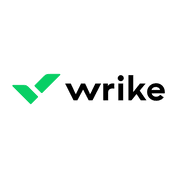Workflow automation software is an application that allows people to organize, automate and enhance their business operations. It is a tool used to handle repetitive tasks. Workflow automation is an integral part of every organization’s technology infrastructure because it makes the execution of... Read more

Researched and Edited by Rajat Gupta
Last updated: July 2025

Researched and Edited by Rajat Gupta
Last updated: July 2025
Common Features
Task Management
Workflow Configuration
Access Control
Business Process Automation
+ 8 more
Unique Features
Project Management
Document Management
Issue Management
Drag and Drop
+ 52 more
Pricing
41% Software offers Free Trial
46% Software offers Freemium
Showing 1-20 out of 80

9.8
Spot Score

Add to compare
Product Description
Pyrus is a powerful cloud-based automation platform for your business. It makes it easy to automate any kind of work flow, from HR, to marketing, to customer service. Pyrus also manages work in progress and notifies the right people when things need attention before they get out of hand.
Read morePricing
Pyrus offers custom pricing plan
9.8
Spot Score

Add to compare
Product Description
Tallyfy is a powerful workflow automation software used by retailers all over the world. Tallyfy streamlines internal processes, making employee's work more efficient, freeing time for them to focus on what really matters - their customer. It replaces and automates paper based forms, emails and ...
Read morePricing
Free Trial available, Try Now
Starts from $4.16/User/Month when Billed Yearly
9.7
Spot Score

Product Description
Monday.com is a cloud-based platform designed to enhance business operations, streamline workflows, and improve team collaboration. It offers powerful project management tools, enabling real-time tracking, task automation, and seamless communication across dispersed teams. With an intuitive ...
Read morePricing
Free Trial available, Try Now
Starts from $9/user/month when monthly, also offers free forever plan
Pros & Cons
Streamlines workflows with customizable and user-friendly interfaces, enabling effortless task and project management.
Automation of repetitive tasks enhances productivity, minimizes errors, and saves time.
Exceptional customer support provides quick, detailed, and helpful responses, ensuring a seamless user experience.
Comprehensive collaboration features keep teams synchronized, reducing miscommunication and consolidating updates, files, and tasks in one platform.
The vast range of features can be overwhelming, particularly for newcomers or when starting from scratch.
Limited native integrations for certain tools like Google Drive, requiring workarounds or third-party apps.
9.6
Spot Score

Add to compare
Product Description
karbon is a workflow automation software to complete repetitive tasks through an easy-to-use interface. Karbon lets you build and run powerful repeatable workflows for data processing, file sharing, business processes and more. No programming or scripting required, it's designed to automate ...
Read morePricing
karbon offers custom pricing plan
Pros & Cons
Automates repetitive and client-facing tasks, streamlining workflows and improving efficiency.
Seamless email integration allows for task assignment, updates, and communication within a unified system.
Highly customizable workflows and templates support diverse needs, enabling consistent and repeatable processes.
Triage feature enhances task prioritization and reduces email overwhelm, improving overall productivity.
Initial setup and onboarding can be cumbersome, especially for larger teams or complex workflows.
Limited integration with additional apps or platforms reduces its functionality in some areas.
9.6
Spot Score

Add to compare
Product Description
Flux is a workflow automation tool that helps you automate repetitive tasks, tag your files while working with them, and reduce switching between apps. Flux is designed to help you relegate many repetitive and laborious tasks into the background so that you can focus on the work you love
Read morePricing
Free Trial available, Try Now
Fluix offers custom pricing plan
Pros & Cons
Simplifies documentation processes and eliminates the need for paper, enabling businesses to go fully paperless.
Easy to use and intuitive, requiring minimal training or technical expertise to operate effectively.
Offers feature-rich workflow management with automation, e-signatures, and the ability to attach multimedia like photos and GPS data to documents.
Seamless integration with tools like Apple devices, enabling efficient markup with Apple Pencil and workflow customization.
Limited Android/Google Play support, making it inaccessible for non-iOS users.
Customization of PDF files and creation of complex forms can be cumbersome for some users.
9.5
Spot Score

Add to compare
Product Description
Cflow, the ultimate workflow automation tool, revolutionizes business processes by eliminating paperwork and manual errors. Its user-friendly visual designer allows users to build custom workflows without coding. Integration with APIs and Zapier enables compatibility with third-party tools. The ...
Read morePricing
Free Trial available, Try Now
Starts from $7/User/Month when Billed Yearly
9.2
Spot Score

Product Description
Wrike is a web-based project management software designed to enhance team collaboration, streamline workflows, and boost productivity. It provides real-time visibility into project progress, ensuring teams stay aligned with deadlines and objectives. Task management and prioritization tools help ...
Read morePricing
Free Trial available, Try Now
Starts from $0/user/month when monthly
Pros & Cons
Easy-to-use interface with drag-and-drop functionality, providing seamless task management and organization.
Flexible and customizable, allowing teams to tailor the tool to diverse project needs and workflows.
Collaborative features like dashboards, @mention tagging, and real-time updates improve communication and accountability.
Gantt charts and advanced reporting enable efficient project tracking and professional presentation.
Difficult to navigate for beginners with a steep learning curve for mastering advanced functionalities.
Limited high-level dashboard structures for managing multi-layered teams and subteams, leading to clutter in larger projects.
8.9
Spot Score

Add to compare
Product Description
Metatask automates your workflows by analyzing, verifying, and executing business processes from form to database. It finds missing or incorrect information and completes the form. It converts paper documents into electronic data and saves it into a central database in formats which are ...
Read morePricing
Free Trial available, Try Now
8.8
Spot Score

Add to compare
Product Description
Avo is a workflow automation software that make business processes efficient and eliminates time wasted on repetitive tasks. It's an ideal solution for any task or workflow that has been repeated many times, and involves people, spreadsheets and documents.
Read morePricing
Avo offers custom pricing plan
8.7
Spot Score

Add to compare
Product Description
Introducing Workflow86, the ultimate solution for business operations automation. With a powerful array of features, this all-in-one no-code platform makes it easy to streamline and orchestrate your workflows in a single place. Say goodbye to managing multiple SaaS subscriptions and struggling ...
Read morePricing
Workflow86 offers custom pricing plan
8.5
Spot Score

Add to compare
Product Description
Qntrl goes beyond just being a valuable tool; it's a game-changer for professionals seeking heightened control, visibility, and automation in their daily workflows. This innovative software empowers users by offering an unparalleled level of oversight and understanding within their processes, ...
Read morePros & Cons
Excellent design and seamless integration with other software, improving workflow connectivity.
Intuitive, user-friendly interface makes it accessible even for non-technical users.
Highly customizable and scalable to fit diverse business needs, ensuring flexibility.
Simple to set up and configure, with a codeless process designer (Blueprint) simplifying workflow creation.
Limited mentions of any drawbacks or weaknesses in user reviews, suggesting strong satisfaction overall.
Could include some niche suggestions for process improvement which might not resonate with seasoned organizers or very complex fields needing hyper-specific setups.
8.5
Spot Score

Add to compare
Product Description
Introducing Beau - the ultimate solution for simplifying client workflows. Our platform allows you to easily design and manage step-by-step processes, while offering convenient tools for clients to view quotes and make payments through a secure portal. Collaborate seamlessly with your team to ...
Read morePricing
Free Trial available
Beau offers custom pricing plan
8.4
Spot Score

Add to compare
Product Description
Welcome to Browserflow, the ultimate tool for automating work on any website. With our cutting-edge technology, you can save time and effort by automating repetitive tasks in your own browser or even in the cloud. Best of all, there's no need for coding knowledge. Take charge of your workflow ...
Read morePricing
Browserflow offers custom pricing plan
8.4
Spot Score

Add to compare
Product Description
Yoroflow is a revolutionary no-code workflow automation software, designed to enhance governance, optimize business processes, and provide exceptional support and resources. This pocket-friendly, web-based application allows users to easily create end-to-end automated workflows without any ...
Read morePricing
Free Trial available, Try Now
Yoroflow offers custom pricing plan
8.4
Spot Score

Add to compare
Product Description
Airdesk is an intelligent cloud-based software platform that allows businesses to create their own custom workflow applications. Businesses can build unique processes in minutes without any programming skills.
Read morePricing
Free Trial available, Try Now
8.3
Spot Score

Add to compare
Product Description
Introducing Relay, a cutting-edge solution for elevating your workflow automation experience beyond conventional triggers and actions. Designed with professional productivity in mind, Relay brings a revolutionary approach to streamlining and enhancing workflows unlike ever before. With its ...
Read morePricing
Free Trial available, Try Now
Starts from $9/month when yearly, also offers free forever plan
8.3
Spot Score

Add to compare
Product Description
Introducing PerfectApps, a cutting-edge solution for Web App Development & Workflow Automation. Designed to empower subject matter experts, PerfectApps streamlines the process of building enterprise-ready web applications in record time. No longer do you have to wait months for coding and ...
Read morePricing
Free Trial available
PerfectApps offers custom pricing plan
8.3
Spot Score

Add to compare
Product Description
DocsCube enables businesses to automate processes involving documents, and get data-driven insights to effectively collaborate and manage their projects. Contract Lifecycle management and E-signature are just the beginning of what you can do with this product. Generate documents quickly and ...
Read morePricing
Starts from $29/Month, also offers free forever plan
8.3
Spot Score

Add to compare
Product Description
Zenphi is a no-code process automation platform built specifically for Google Workspace, empowering any user to easily automate, connect and optimize their workflows of any complexity. With an intuitive drag-and-drop builder, if you can draw a flowchart of your process, then you can automate it ...
Read morePricing
zenphi offers custom pricing plan
8.3
Spot Score

Add to compare
Product Description
GoodFlow is workflow automation software that quickly and easily automates labor-intensive manufacturing/quality control processes. Its module based graphical user interface makes it accessible and easy to use, even by non-programmers.
Read morePricing
Free Trial available, Try Now
Disclaimer: This research has been collated from a variety of authoritative sources. We welcome your feedback at [email protected].
Connecting Smart Buyers with Leading Sellers
Find the perfect software for your needs or showcase your product to 250,000+ buyers. SpotSaaS makes it easy for everyone to succeed